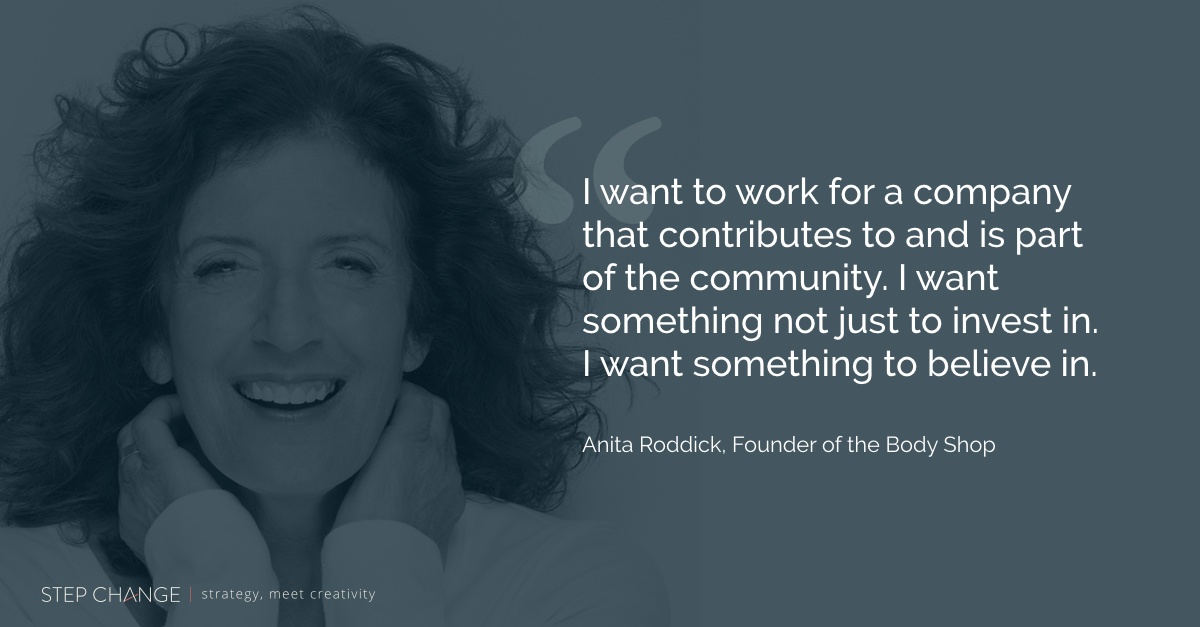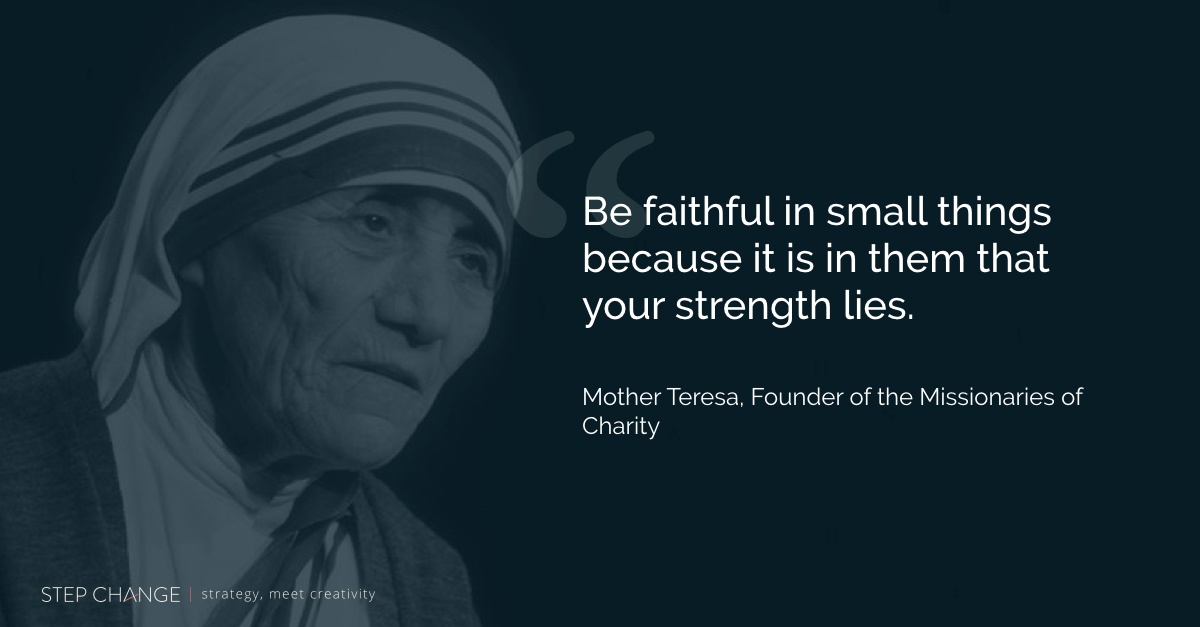If great strategic thinkers like Anita Roddick, Jean Nidetch, and Mother Teresa would run your business, how would they transform your customers into raving fans?
Taking lessons from history is always a good idea. Although we have more technology than ever to engage our potential customers, many core customer engagement strategies remain the same over time.
Why is customer engagement so important in 2018? Let’s take a look at some of the most important statistics.
- According to Epsilon, 80% of prospects require a personalised customer experience in order to convert. So much for blind wide-net marketing strategies!
Tweet this - Customer service is becoming more important than ever in the overall engagement experience. Unfriendly customer service causes 60% of people to switch companies, and dull employees make 46% of people try something else, according to PwC.
Tweet this - Past engagement is essential in gaining future sales. 84% of women in the Millennial generation are influenced by the reviews, comments, and ratings of previous clientele, according to Merkle and Levo.
Tweet this
There are plenty of other statistics out there, but they all come to the same point: customer engagement should be a priority for every business in the modern landscape.
What would the successful marketing gurus of the past think of the modern world if they had to start marketing today? Perhaps looking at some of the successful marketers of the past will help us to find some trends.
While modern business leaders have much to learn from these great women, these insights should be taken with a grain of salt and applied according to your specific circumstances today.
Dame Anita Roddick, Founder of the Body Shop

Dame Anita Roddick built an empire based around beauty and social change. The second part of her methodology definitely translates. Sprout Social found that 66% of modern consumers prioritise the way that companies handle important social issues.
She was the first to acknowledge that there was a market for chemical-free all-natural products. The Body Shop was also one of the first brands to take environmentally conscious production methods into account. If the “no animal testing” environment of today’s beauty landscape is any indication, Roddick definitely had a great idea going with that.
1. Create a purpose-led organisation and ensure your employees all believe in your brand and purpose
The Body Shop was built as a force for good. Their brand purpose has always been to “create naturally-inspired beauty products from sustainably sourced ingredients from all around the world.”
They hire staff for their passion for beauty and the environment; they are dedicated to putting customers at the heart of the business. The result was an extraordinarily accessible brand that always made a good impression when it was in the eye of the public.
2. Use storytelling to humanise your brand
The storytelling that The Body Shop did to expand its brand played into its core principles. All of its advertisements came through as authentic, giving even the most sceptical customers something to believe in.
In the modern world of near-infinite choices, belief in a brand is often the difference between a sale and a missed conversion.
Recommended reading: Brand Storytelling Examples: How to Hold Customers’ Attention
Jean Nidetch, Founder of Weight Watchers

As perhaps the most famous weight loss company in the world, Weight Watchers continues to be a leader in an industry that just seems to keep expanding (no pun intended).
There are more fly-by-night celebrity diet programs than ever. But Weight Watchers stays its course and continues to build an audience many years after Jean Nidetch first thought of the idea.
Keep in mind that the idea Nidetch brought to the table was not the idea of solving weight loss. She was simply the first to create a long-standing company around the idea.
When she was first beginning her company, there were plenty of weight loss solutions on the market. They had not been consolidated into a single company or organised into a program, however. This is where Weight Watchers really made its mark.
1. Listen to what people are telling you
Nidetch took to heart the needs of her members. She encouraged all of her employees to engage with outside communities and listen to what people suffering from weight problems had to say.
She understood that in order to stick with any sort of subscription model, the brand had to really connect with its customers beyond the core service that it was offering. Weight Watchers was not only about weight loss — it was about creating a community of people who could understand each other emotionally.
2. Involve your power users
The company was also one of the first to really connect with its power users. Similar tactics are used today when companies single out first responders for exclusive offers and giveaways.
In modern business, a company can emulate this strategy by offering coupons to the customers who are most engaged in company Facebook threads.
Mother Teresa, Founder of the Missionaries of Charity

In a previous article, we had looked at how Mother Teresa would beat Amazon in Australia. Now let’s explore how she would win customers through engagement.
Although we may view her publicly as a charitable worker, industry aficionados understand that she was able to be most successful because of her organisational skills.
Yes, Mother Teresa received the Nobel Prize for her humanitarian work. However, her work definitely included the administration of a larger charitable effort. We hold her personally in such high esteem because she led this effort from the front.
1. Handle negative feedback
Mother Teresa had to suffer many criticisms. She was shut out of many charitable business circles because of her views on abortion. She was also widely criticised because of the poor conditions of many of the hospices that she was in charge of.
However, she was able to turn many of these criticisms into actionable items that helped to improve her hospices over time. These days, effectively handling negative customer feedback is part of creating a great customer experience.
Take each negative comment as an opportunity to improve. You may not be able to eliminate all critics, but you can organise their criticisms into a better working relationship with your target audience.
2. Personalise customer experience
A businessman and his team went to Kolkata for a business trip and took a side trip to see the home of the Sisters of the Missionaries of Charity. They had just come from their business meeting talking about big, hairy, audacious goals (BHAG), so they asked the sisters if Mother Teresa had set an audacious goal.
The nuns gave a response that left the team astounded: “Oh, no. Mother Teresa was completely focused on helping one person at a time.”
Businesses can gain a great insight from this: your customers are more than just a statistic. So make your customers feel special. Remember, your customers will not remember you for what you did and what you said; they will remember you for how you made them feel.
Your customers will not remember you for what you did and what you said; they will remember you for how you made them feel. #CustomerEngagement #BusinessStrategy
Tweet this
Conclusion
With all the lessons that entrepreneurs of the past have to teach us, it may seem overwhelming when we have to apply them using the wider potential of modern technology. We must all realise that the tools we used to implement our core principles may change, but the core principles of good business do not.
The examples of these outstanding women above represent us all in a way. Keep in mind that they were building from the examples of the past as well, creating fresh strategies with the guidance of yesterday's heroes.
The lessons of the past and the tools of today can help you to create ongoing relationships that will grow your brand for years to come.





